[dropcap]T[/dropcap]here is huge potential for growth for the insurance industry in the country, both life and general. With rising cost of living and high inflation, it is difficult to set aside funds for insurance, however, with improved economic conditions and enhanced literacy, Pakistan’s insurance sector is growing but not at the desired level.
With insurance penetration at just around 0.2 percent of total population and the size of the insurance industry below 1 percent of GDP, future growth in insurance will come only through increased awareness, analysts said.
Having achieved a market capitalization of Rs127 billion, the non-life or general insurance companies are poised for further growth. Big among them are striving to become bigger by diversifying their business and products.
Many analysts believe that going forward, the sector could also see consolidation with weak firms forced to leave the scene. From the traditional underwriting in marine, fire and motor, most general insurance companies have launched new products to capture a bigger share of a competitive market. Now they have livestock insurance, travel insurance and other retail products in their portfolio.
Both general and life insurance companies have started to write policies under the Shariah-compliant ‘Takaful’ so as to broaden their business base. Today, insurance companies that are covering all three — general, life and Takaful, stand tall among others.
NEW BOOST
In 2014, Pakistan’s insurance sector got a new direction with introduction of Shariah-compliant products (takaful). This has given a boost in competition which helped spread the uptake of insurance.
Pakistan introduced new takaful rules in 2012, allowing the use of takaful windows, which enables insurers to offer Shariah-compliant and conventional products side by side, provided client money is segregated. This prompted a legal challenge by the country’s five full-fledged takaful firms claiming the rules gave conventional insurers an unfair advantage, with the legal dispute finally being resolved in May of this year.
The regulator Securities and Exchange Commission of Pakistan (SECP) expects more and more conventional insurers in the country will eventually offer takaful products.
Takaful is seen as a bellwether of consumer appetite for Islamic finance products. It is based on the concept of mutuality: The takaful company oversees a pool of funds contributed by all policyholders, and from which claims are paid.
[ads1]
With an improved economy and new methodology for assessing incurred-but-not-reported claims, the non-life insurance business eyes a promising future.
We’re upbeat on insurance growth as economy is picking up, foreign funds under the $46 billion China-Pakistan Economic Corridor (CPEC) are going to flow and insurance companies are getting smarter,” sources in insurance sector told PAGE.
According to them, big insurance companies now rely on software designed to help executives keep a constant check on various key financial ratios and quality of the staff work on daily and weekly basis.
Software engineers say even smaller firms are hiring them to develop and run the fintech (financial technology) facility that suits their daily needs like real-time segmental data processing of diverse general insurance activities. Besides, satellite tracking of insured cars and other vehicles, some companies also monitor high-value insured assets through remote cameras to resolve disputes on asset damage.
Until a few years ago theft of vehicles was a bane and insurance companies declined to offer cover for motor insurance and when they did, it was to strong corporate clients and the premiums were formidable.
The non-life insurance sector comprises 42 insurers, including three general Takaful operators and one state-owned insurer, the National Insurance Company Limited (NICL), — with an exclusive mandate to underwrite public property — and one state-owned reinsurer, the Pakistan Reinsurance Company Limited (PRCL).
The non-life insurance market remained dominated by top four players with over 62 percent of the market share, while the remaining 38 percent was shared among the 36 insurers.
The insurance penetration and density remained very modest as compared to other jurisdictions while the insurance sector underdeveloped relative to its potential.
The profitability of the country’s non-life sector grew 41 percent to Rs10.5 billion in financial year 2015, which analysts attribute to “strong growth in investment income and improved underwriting income”.
After adjusting for a one-off provisioning reversal of Rs1.9 billion booked by EFU General Insurance, against its associate, profitability of the sector grew by 63 percent to Rs12.2 billion in 2015. IGI, Adamjee and EFU, which together command 64 percent of the insurance sector’s earnings, showed growth of their profit by 57, 36 and 28 percent, respectively.
Insurance companies, to a great extent depend on income from investments to augment their bottom line. During 2015, investment income of non-life insurance companies increased by 29 percent to Rs7.7 billion, driving the overall profitability of the sector.
The effective implementation of insurance laws is the need of the hour, there is poor implementation of third-party insurance for motor vehicles. The provinces were also not implementing several other insurance laws, including group insurance for the industrial workforce, sources in the SECP said.
Although insurance premiums in Pakistan have grown at 15 percent over the last five years, but the penetration of insurance is still very low from regional standards.
The penetration of life insurance is a mere 0.51 percent of gross domestic product while that of non-life insurance is 0.26, both values being the lowest in South Asia. The insurance density, which is per-capita expenditure on insurance measured as a ratio of premium to population, is 10.40, also the lowest in the region. To improve the situation, the stakeholders need to raise awareness among people for tapping potential in the country’s insurance sector in real term.



